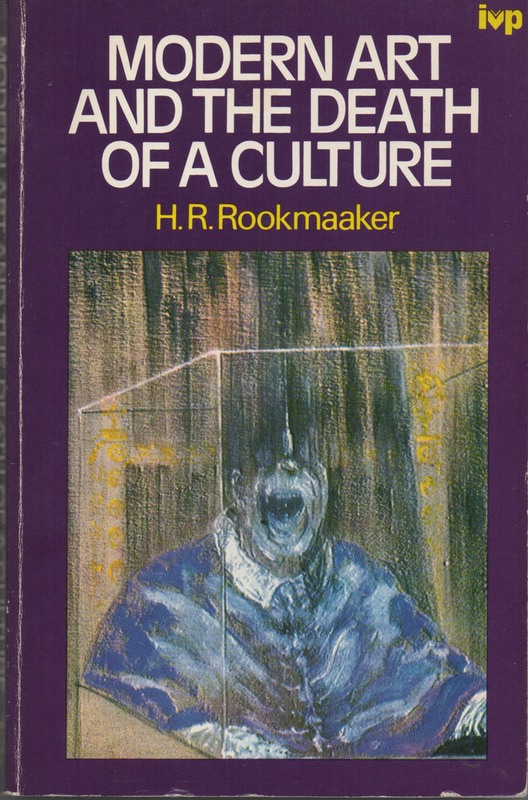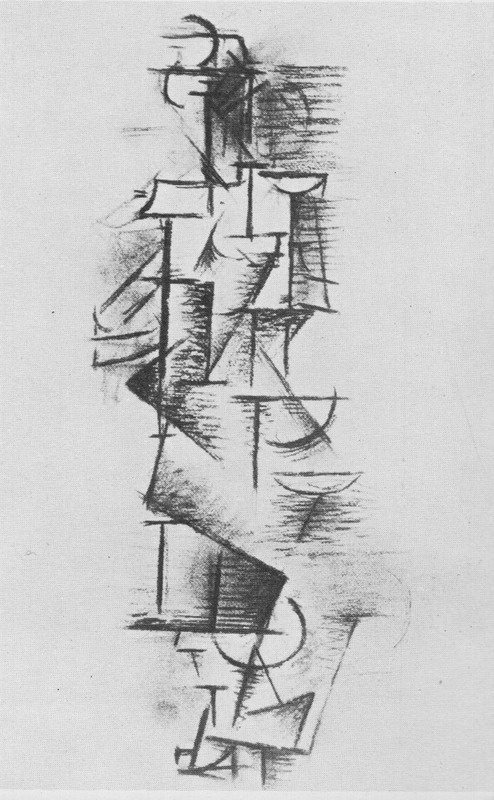CUBISM AS A DESTRUCTIVE FORCE
'Cubist painters used pre-eminently mundane articles like cigarette packs as subjects for their world [sic - PB, work?]; not long after, some artists, like Kurt Schwitters, would use the packs themselves, no longer representing them, but simply fixing them onto the canvas. Dada satirised the whole idea of “art” as any kind of “meaningful” project. The Surrealists who followed “found” art in the street, and saw in the products of the unconscious a kind of “psychic materialism”; they, like the Dadaists, carried on the Great Joke, pulling out the “transcendental” by the roots. Their “found art” exploded into a variety of forms: art brut, musique concrète, “word salad.” Art was no longer a means of imbuing the everyday world with significance; rather, the whole drift of art in the last century was to bring it down to the everyday—the central icon here, of course, is Andy Warhol's Brillo Box.'
This extract from Gary Lachman's book A Secret History of Consciousness (1) provides a useful summary of one of the ways in which Cubism and its consequences can be understood. A similar argument is developed at greater length in Hans R. Rookmaaker's book Modern Art and the death of a culture. (2) Rookmaaker was founding Professor of the Art History Department of the Free University of Amsterdam, deeply influenced by the 'Reformational philosophy' of Abraham Kuyper, Hermann Dooyeweerd, Dirk Vollenhoven. The culture he describes as dying is, broadly, Humanism, as it emerged from under the wing of Renaissance Catholicism. Dooyeweerd sees Humanism as torn by a 'dialectical tension' between freedom (as with Romanticism) and nature (as in the laws of nature representing an unbreakable constraint). In Rookmaaker's understanding of post-Renaissance art, the tension is more between Platonism (the attempt to find an absolute beauty beyond the perceived world) and nature, understood as the creation of God and therefore, despite the consequences of the Fall, intrinsically good. Although his book is mainly concerned with the collapse of the idealist/Platonist vision the art that he admires - landscape by Jan Van Goyen, domestic interior by Jan Steen (both seventeenth century Dutch and both, as it happens, Catholics) is broadly realist, expressing a love for the world, for nature, God's creation, as actually encountered. Both Rookmaaker and Dooyeweerd would see Humanism as essentially an attempt to assert human 'autonomy', independence of the sovereignty of Christ. Both would also agree with Kuyper's central doctrine of a 'common grace', enabling non-Christians to produce great works, and they would have shared the view that all human endeavour is grounded in what Dooyeweerd called a 'religious ground motive.' (3)
(1) Gary Lachman: A Secret history of consciousness, Great Barrington, MA, Lindisfarne Books, 2003, p.253.
(2) H.R.Rookmaaker: Modern Art and the death of a culture, Leicester, Inter Varsity Press, 1970.
(3) See e.g. Herman Dooyeweerd: Roots of Western Culture, Grand Rapids, Paideia Press, 2012 (first published in Holland, 1959).

For Rookmaaker, 'Cubism', which, like Lachman, he identifies with the work of Picasso, was the moment when Picasso recognised the absurdity of the whole Humanist endeavour. As such, it was an event of world shattering importance.
He begins his discussion of Cubism with the influence of Cézanne on some of the younger painters in Paris around 1906-7, laying particular emphasis on his advice to 'Penetrate into what you have in front of you, and persevere in expressing yourself as logically as possible':
'Amongst this group of young painters was Picasso. What influenced him, as well as the others, were, first, Iberian sculpture, blending Greek classical art with a more primitive search for the impersonal and general, and soon, too, African masks and sculptures. The fact that in their reaction against the superficial naturalism of the nineteenth century they "discovered" the truth and beauty of primitive art (which had previously been the concern only of ethnologists) betrays a deep spiritual similarity in aim and in the understanding of reality. Primitive man feels one with nature and its forces, and in his religion he uses his masks to lose himself and become one with the spirit (often an animal one) of the tribe. For modern man, even if in a less mythical way, nature is the only true reality, and man is basically no more than biological/psychological. The aims of the cubists, their quest for a new expression, a new art, were in the final analysis the making of a new world-view, one that broke away from the age-old humanism of western society. The personal was lost, for there was no longer a personal God. Man, animals, plants, things, they are all basically the same. So there should be no basic difference in the way they are depicted.
'The cubist movement was very complex in its aims. There was the same search for the absolute as we found with the Munich group of Der Blaue Reiter, the same wish to portray the true reality behind the appearances. It was rather like Plato’s search for the basic ideas behind all reality ; and it was certainly not by chance that their art was characterised by mathematical, or rather geometrical, forms, just as Plato had said that the geometrical was the deepest idea behind reality. In keeping with the whole of the western tradition they were rationalistic and intellectual. Yet there was a strange violence, particularly in the works of the first years of Picasso’s cubism, something irrational, overflowing emotions, as if he passionately wanted to break down the old image of man, too long revered in a humanist sense as supreme beauty.' (pp113-4)
After a discussion of the Demoiselles d'Avignon and of the early period of collaboration with Georges Braque, he comes to what he regards as the crunch:
'It is at this stage that Picasso must have realised that their quest had failed. They had searched for the universal, the general structure of things, that which is more than the strictly individual and specific - and in so doing had lost the personal, the human, the ‘real’. It was as if it had been shown to be impossible ever to reach the universal directly, without seeing the absolute through the specific. He who would know love must experience personal, specific love, or there is but a dim abstraction which is no love. Their quest to show what Plato might have called the idea, or Aristotle the form, had ended in beautiful pictures that yet presented no more than strange puzzles, enigmatic images in which the real content was virtually lost.
'When Picasso realised this, he had to take another step forward. Maybe he hesitated for some time - and this is why the development seemed to have come to a standstill [? - PB]. For the next step was to be a tremendous one. The consequences of it could not be foreseen. Slowly it must have entered into Picasso’s mind that the step was unavoidable, whatever the results. Only a man of his stature, his talents, his daring, his insight could ever have done it.
'And he took the step. He did so when he accepted the failure, and took the consequences. There are no universals. The general, the absolute, is non-existent. And if there are no universal principles, if there are no absolutes, then ... we can understand his hesitation ... then this world is absurd, nonsensical, without meaning.'

Picasso: Standing female nude
1909 according to Rookmaaker's book, summer or autumn 1910 in William Rubin: Picasso and Braque - Pioneering Cubism
After pointing out, rightly, that there was a lot of self mocking absurdity going on at the time (Alfred Jarry being the obvious example) he continues:
'We must realise that the men and women who were involved in these new trends of around 1910 were only very few in number. At the most they could not have numbered more than a thousand. But what was happening was finding a response with an ever-increasing number of people. Picasso, after some years of preparation, had dared to break through the sound-barrier of reality ... and the sonic boom was not only heard at the time but the last reverberations are still around us - if we but listen.' (pp.119-121)